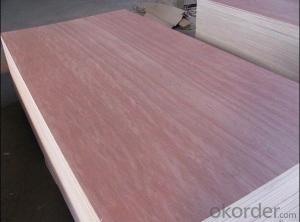Plywood is a versatile and widely used material in various industries, from construction to furniture making. It’s made from thin layers of wood veneer glued together under heat and pressure. Plywood sheets come in a variety of sizes, which can be a bit overwhelming for those new to the material. But don’t worry, we’re here to break it down for you. Understanding the range of plywood sheet sizes will help you make the best choice for your project, whether it’s a simple DIY task or a large-scale construction job.
The Standard Sizes
Plywood sheets are typically available in standard sizes, which are 4X8 feet, 4X10 feet, and 5X5 feet. These sizes are the most common and are used in a wide range of applications. They are perfect for larger projects where you need a lot of material. However, if you’re working on a smaller project or have limited space, these sizes might not be the best fit.
Custom Sizes for Specific Needs
If the standard sizes don’t quite fit your needs, don’t worry. Many manufacturers offer custom sizes to cater to specific project requirements. This can be a lifesaver when you’re working on a unique design or have limited space to work with. Custom sizes can also be more cost-effective, as you’re only getting the amount of material you need.
The Importance of Plywood Thickness
When choosing a plywood sheet, thickness is another important factor to consider. Plywood sheets come in various thicknesses, ranging from 1/8 inch to 3/4 inch. The thickness you choose will depend on the specific requirements of your project. For example, a thinner plywood sheet might be suitable for a decorative wall panel, while a thicker one would be needed for a structural component.
Types of Plywood and Their Uses
There are different types of plywood, each with its own set of characteristics and uses. Marine-grade plywood is designed for use in wet environments and is resistant to moisture, making it ideal for boat building or outdoor furniture. Baltic birch plywood is known for its high-quality construction and is often used in high-end furniture and cabinetry.
Choosing the Right Plywood for Your Project
Now that you have a better understanding of the sizes and types of plywood, it’s time to choose the right one for your project. Consider the size of your project, the space you have available, and the specific requirements of the project. Don’t be afraid to ask for advice from professionals or do some research online. Remember, the right plywood can make all the difference in the quality and longevity of your project.
The Emotional Connection to Your Project
Working with plywood can be a deeply satisfying experience. There’s something about transforming a flat sheet of material into a functional piece of furniture or a beautiful piece of art that brings a sense of accomplishment. Whether you’re a professional or a DIY enthusiast, the process of creating with plywood can be incredibly rewarding.
The Future of Plywood
As the demand for sustainable and eco-friendly materials grows, the future of plywood looks bright. Manufacturers are constantly innovating and developing new types of plywood that are not only durable and versatile but also environmentally friendly. This means that you can feel good about using plywood in your projects, knowing that you’re contributing to a greener future.
Conclusion
Understanding the range of plywood sheet sizes is crucial for any project that involves this material. From standard sizes to custom options, and from thickness considerations to the type of plywood, there’s a lot to think about. But with a bit of research and planning, you can find the perfect plywood sheet for your needs. So go ahead, unleash your creativity, and bring your projects to life with plywood!







